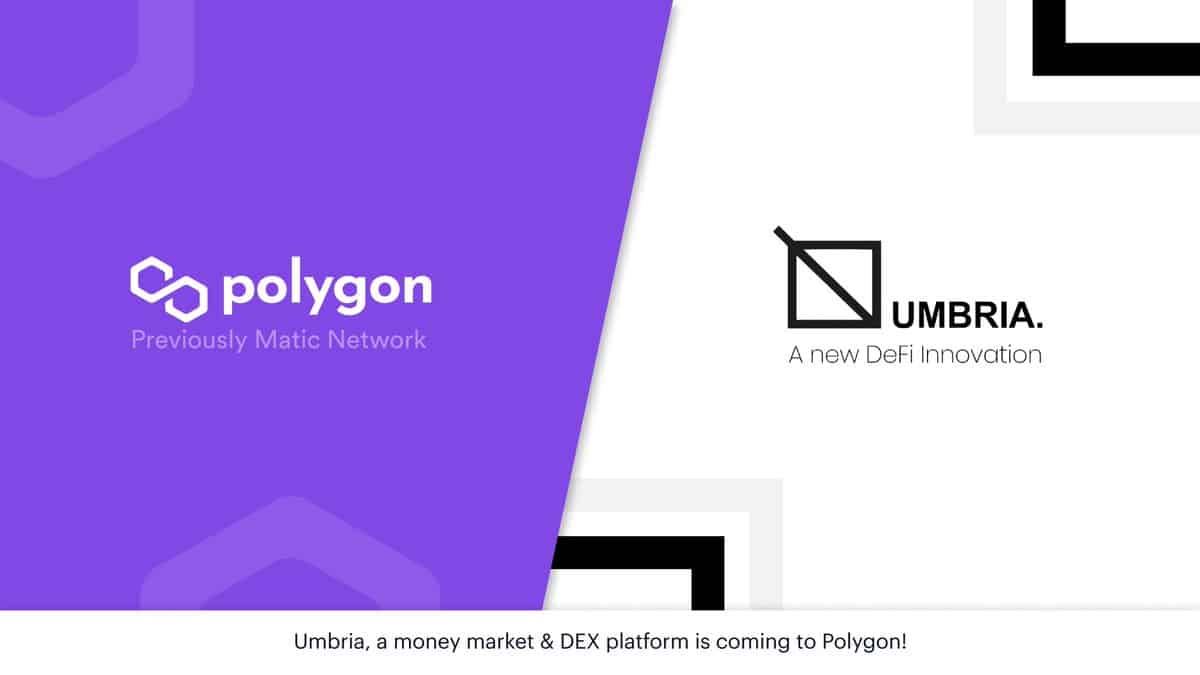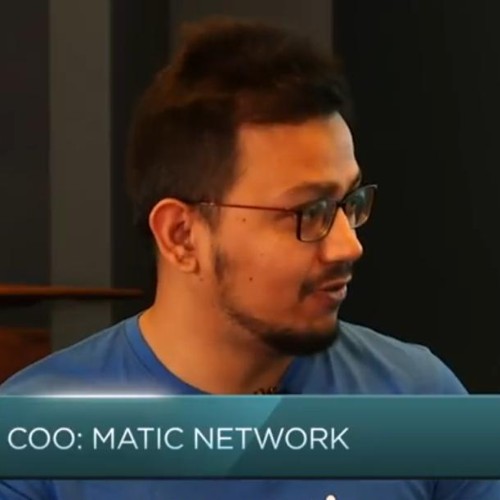Layer 2 solutions are on the rise in the crypto space. So much so we are seeing all kinds of solutions come up in the space. Public blockchains are sometimes limited by the utilities and kinds of solutions that they can offer. Layer 2 solutions come to the rescue!
It is the case with Polygon, a layer 2 solution that offers many within the Defi space the opportunity to get their project going within the Ethereum ecosystem without sacrificing anything.
Recently, Umbria the Defi governance system went into partnership with Polygon in several areas. E-Crypto News spoke to both Clem Chambers, administrator of Umbria, and members of the Polygon team. Here is what they had to say.
Barney & Oscar Chambers, Co-Lead Developers, Umbria
E-Crypto News:
Congratulations on the new partnership! What are the benefits of the new partnership for members of the cryptospace?
Our partnership with Polygon (formerly Matic), who are leading innovators in the cryptocurrency space, is a great first step for solving the issue of high transaction fees in current DeFi platforms.
Their additions to the Ethereum ecosystem are revolutionary and will solve the scaling issues that Ethereum is currently facing. Polygon has a layer two solution, which drastically decreases the on-chain cost for interacting with DeFi projects based on the Ethereum blockchain.
Umbria partnering with the Polygon team will enable the implementation and deployment of a layer two DeFi platform quickly, and with greater assurance that it has been implemented in an optimal way with regards to fees and security.
Members of the crypto space can look forward to all the benefits of a robust layer-two solution for DeFi – and there are a number of them:
– Lower transaction fees
– Quicker transactions
– Lower barrier to entry for investors and traders with less funds
The partnership also offers a developer support framework for the Umbria team, which will reduce the development time required to deploy the next generation of DeFi.
E-Crypto News:
How does the Polygon plasma sidechain work? How does its consensus and transaction confirmation mechanism function?
The Plasma sidechain is a framework that enables the creation of ‘child’ blockchains that use the main Ethereum chain as a trust and arbitration layer.
Work is done using the sidechain, and is then cryptographically signed and submitted to the main Ethereum blockchain for the purposes of finality.
In Plasma, child chains can be configured to match the demands of specific use cases specifically those that aren’t feasible on Ethereum today.
Polygon uses a PoS consensus method enabling a faster block time than Ethereum – roughly 2 seconds.
E-Crypto News:
How will the Polygon-Umbria partnership be affected by the ETH 2.0 rollout?
The release of Ethereum 2.0 is an exciting development in the cryptocurrency space, but it is still unclear when the full release will be available.
Furthermore, Ethereum 2.0 may not provide enough of an increase in scalability for certain projects.
Sidechains still look like the best scaling solution for Ethereum in terms of number of transactions per second.
E-Crypto News:
With the rise of new exploits on DeFi how will Umbria avoid such attacks?
One of Umbria’s ethoses is that security must always come first. DeFi projects do not have the luxury of moving fast and breaking things, when something goes wrong in cryptocurrency development, the consequences can be catastrophic.
The Umbria team is dedicated to thoroughly testing all code that is implemented and pushed onto the Polygon and Ethereum mainnet.
We are not in a rush to release new features/products that may not be fully tested. We offer a generous bug bounty for anyone who is able to find vulnerabilities in the Umbria codebase.
E-Crypto News:
Are we seeing a shift from Ethereum-centric blockchain dependence to sidechains like Polygon? Please tell us the reasons for your answer?
Ethereum is simply becoming too expensive to be practical in 2021. We are seeing a huge increase in the popularity of sidechain technology with projects like Polygon and Solana.
These projects are solving the problem of high transaction fees and low throughput on the Ethereum blockchain and adoption of these technologies is growing rapidly.
This year there will be a big shift in the way people develop decentralized applications. Using sidechain technology will become a standard practice in developing Ethereum projects. Layer 2 solutions like polygon are the future of DeFi.
E-Crypto News:
How is the rise of sidechain ecosystems going to help the development of decentralized finance (DeFi)?
Sidechain technology is going to remove the barrier to entry on decentralized finance for users who cannot afford the large transaction fees associated with traditional Ethereum DeFi.
Until now, it has been completely impractical to swap ERC20 contracts or provide liquidity on an Ethereum based DeFi platform such as Uniswap or Sushiswap unless you have tens of thousands of dollars worth of tokens to transact with.
At times of high congestion, a simple token swap on Uniswap has cost over $150. Using Polygon, the fee of this transaction can be reduced by over 99% to less than $1.
With Umbria and Polygon, it now becomes feasible to transact small amounts of cryptocurrency in a decentralized way.
E-Crypto News:
What’s next for Umbria? Any secret plans brewing somewhere?
The next step for Umbria is to release the staking portion of our DeFi platform. We plan to have a fully released system with staking, liquidity mining, swapping and more by the end of 2021.
However, we want to move steadily and sensibly with our development to ensure our success. Umbria will be releasing information on its plans incrementally over the next year. We’ve been really pleased with the community response so far.
E-Crypto News:
What are your thoughts on the increase in DeFi tokens? Are we seeing a DeFi bubble or is it just a natural evolution?
There is definitely a lot of excitement in the DeFi space currently and there have been some very interesting developments in the last 18 months with the introduction of Vaults, innovations in decentralized governance, and more.
DeFi is the next step in cryptocurrency; early adopters will make big long-term money.
E-Crypto News:
How has Umbria made access to DeFi easy?
Umbria has focused its efforts on creating an easy-to-use and cheap DeFi application. The main barriers of access to DeFi are the cost of transacting and the steep learning curve associated with DeFi and cryptocurrency in general.
Partnering with Polygon, Umbria will be able to offer some of the cheapest transaction costs in the industry.
The team has focused on developing an intuitive and easy to understand platform to enable the layman to easily use the Umbria protocol.
E-Crypto News:
What are your plans for the year?
This year Umbria released its governance token on Uniswap. Shortly, we will commence with decentralized airdrops to token holders and UMBR-ETH UNIv2LP tokens.
In the coming months, the staking portion of the Umbria protocol platform will be released, then swapping and liquidity providing will become available.
Sandeep Nailwal, Co-founder and COO of Polygon (previously Matic Network)
E-Crypto News:
Congratulations on your new partnership! What’s next for Polygon?
Polygon will soon launch Polygon SDK, a modular, flexible framework that supports building and connecting Secured Chains like Plasma, Optimistic Rollups, zkRollups, Validium, etc, and Standalone Chains like Matic POS, designed for flexibility and independence!
Learn more about Polygon’s Layer 2 Aggregator solution here:
Our research teams are not only actively working on solutions like ZK Rollups and Optimistic Rollups, but also some other exciting stuff in data availability and cross-chain L2 interoperability.
E-Crypto News:
Please, what is the Polygon developer support program? How can developers gain access to it? What are the benefits?
Polygon has 90+ Dapps in our ecosystem and we actively support developers from all over the world, building on Ethereum and Polygon!
We also regularly take part in the biggest hackathons of the space like ETHOnline, MarketMake and ETHIndia, along with a generous grant program in partnership with Gitcoin!
The benefits of joining the Matic Ecosystem:
-100% EVM Compatibility
-Grants for building your Dapp on Polygon
-Active Marketing and Community Support
-High speed, low cost txns and 100% composablity with Ethereum!
E-Crypto News:
How does Polygon solve the problems usually associated with Ethereum Layer-2 scaling?
-
\Polygon is able to fully benefit from Ethereum’s network effect. This is because it is built as an integral part of the Ethereum ecosystem, while the aforementioned projects are competing ecosystems built from scratch.
- It is inherently more secure. Polygon uses Ethereum, the most secure and battle-tested programmable blockchain in the world, as the economic hub and source of security, while the competing projects use recently launched and less expressive chains for this purpose.
-
Polygon is open and powerful, primarily in terms of architecture types it can support.
This is because (1) Polygon is built on Ethereum, so it can trivially incorporate basically any scaling or infrastructure solution from the Ethereum ecosystem, and (2) we fully adopt Ethereum’s ethos of open innovation and we designed Polygon with it as one of the main design goals.
E-Crypto News:
Are we seeing the rise of side-chain solutions to public blockchains? Will this be the new normal? Please tell us the reasons for your answer.
Definitely! The surge in Ethereum prices and cost of txns has made all Dapps ask this question at least once. When L2? However, developers don’t want to sacrifice the security of Ethereum for speed.
Enter L2! We’ve seen a string of top developers and protocols exploring and building Layer 2 integrations, especially at Matic.
This growth is exponential and we foresee every protocol seriously exploring Layer 2 directly. For instance, Aavegotchi – a popular NFT collectables game decided to completely skip the Ethereum launch and launch on Matic instead.
Layer 2 solutions lke Polygon will allow us to enjoy the security of Ethereum while still having low cost and high speed fees.
E-Crypto News:
Are there any governance models for Polygon? How does governance work?
With Polygon, we are just expanding the suite of solutions we want to offer to the community, and all the existing solutions and implementations will continue to exist and operate as integral parts of this extended platform.
In this new paradigm, the $MATIC token will continue to exist and will play an increasingly important role, securing the system and enabling governance.
The founders and the Matic Network team will all continue to work in an unchanged way under the new brand.
E-Crypto News:
What does the future hold for Polygon?
Future is focused on adoption and empowering our community to lead the governance and future of Polygon.
We are dedicated to scaling Etheruem and Blockchain Dapps, and are committed to a community-first collaborative approach. Let’s bring the world to Ethereum!
E-Crypto News:
Do you have any secrets you’d like to spill?
Stay tuned 😉 There’s a lot of big stuff coming up at Polygon!
E-Crypto News:
What are your thoughts on the ETH 2.0 launch? How will the launch affect Polygon? How prepared is Polygon for the new ETH protocol?
We believe a fully usable version of ETH 2.0 is still far away and Layer 2 solutions like Polygon can help with scaling in the interim.
Even after the launch, Eth2.0 doesn’t provide Ethereum infinite scalability. The best-case scenario is 64 shards which can be similar to today’s Ethereum chain. Assume a single chain improves with POS and has 50 TPS.
Even then 64 shards can offer 3200 tps. The moment the supply of this TPS hits, the Dapps will start utilizing onchain aspects even faster and the demand will rise faster.
We will again end up in the same situation. So we believe that Layer1s are settlement platforms, they are not meant to have the ‘business activity’.










